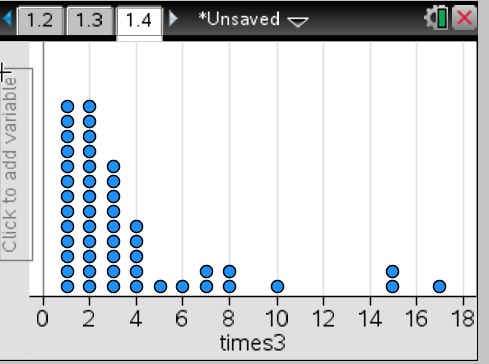Understanding
Students are introduced to the notion of a statistical question, a question that anticipates variability in the response. This helps to set the stage for this series of lessons.
What to look for
As students compare data, be sure they use the appropriate vocabulary to describe the distributions.Sample Assessment
The times it took participants to complete a marathon are shown in the graph below. What is the range of the times?
a. 1 to 17 hours
b. 16 hours
c. 17 hours
d. 1 to 2 hours
Answer: b) 16 hours




